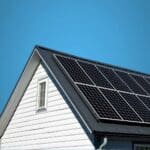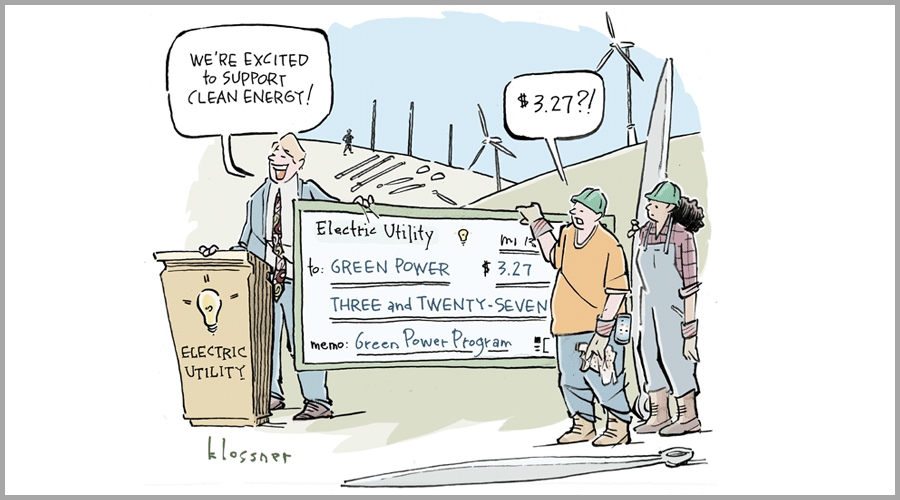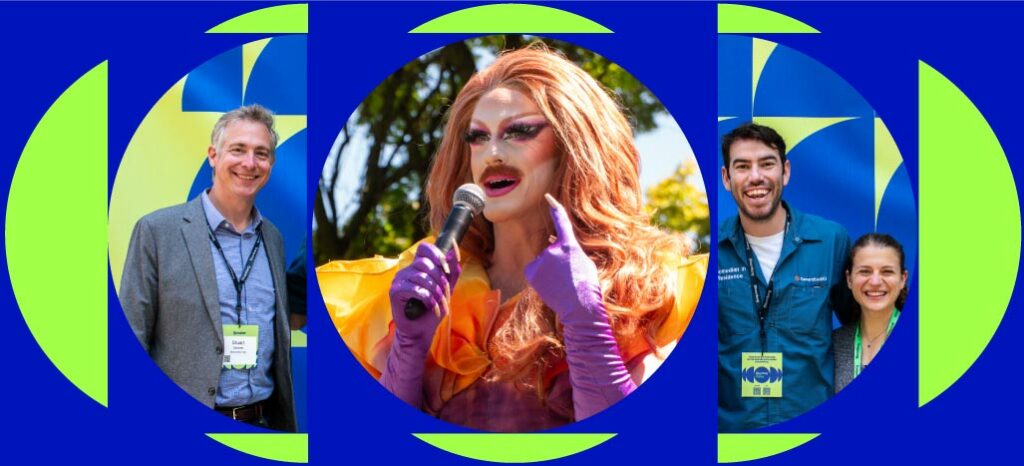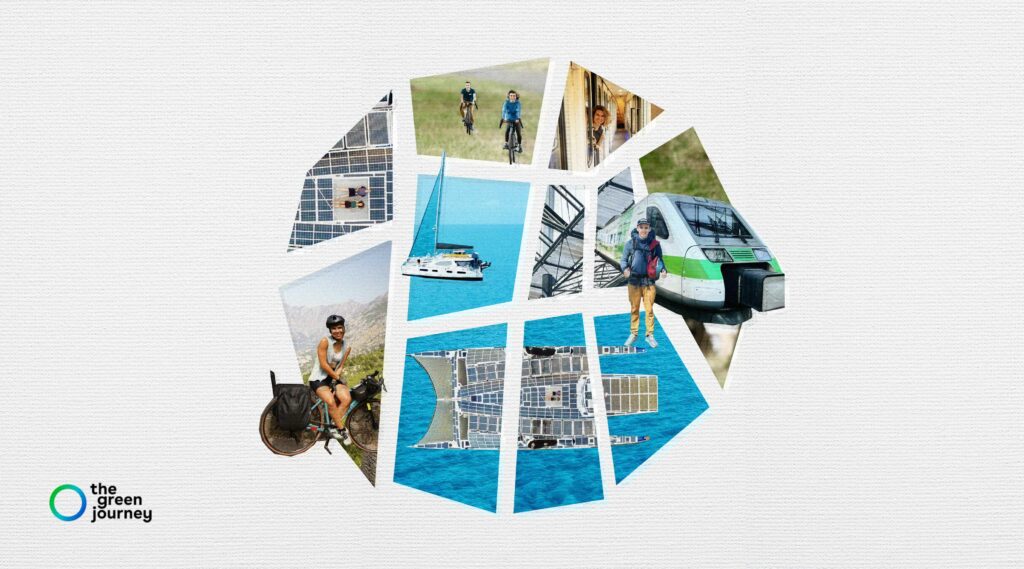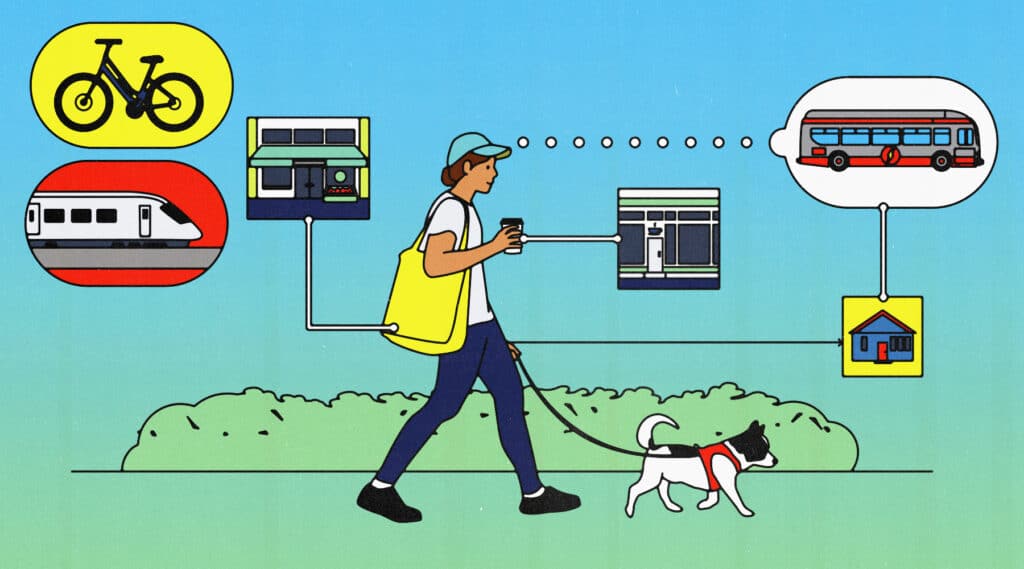Let’s be super clear: this is not a thrilling topic. It will make for poor backyard BBQ conversation (we’re all a bit rusty, so let’s start with some safer topics like sports or sourdough recipes). AND YET: Most of us, in our desire to support clean energy where we can, have looked at our monthly electricity bill and wondered: is my utility’s “green power program” a total greenwashing scam, or does it actually do some good in the world?
Despite the helpful explainer articles that already exist in the universe (like this one and this one), confusion and mystery around the topic still abound. That’s because energy is basically the largest and most complex system humankind has ever created. So it’s not your fault.
To tackle this complex system, we’re going to try putting a storytelling spin on things. Our story begins with….
Chapter 1: Before the energy transition
A looooong time ago, back in the 20th century, America’s electrical grid was humming along nicely, doing its incredible, invisible thing. A variety of electricity “sources”—coal plants, natural gas plants, nuclear plants, hydroelectric dams, and more—were all dumping electrons onto the grid. Everyone had enough electricity, and no one thought much about where their electricity “came from.”
Chapter 2: The transition begins
As America’s population grew and needed more electricity (and as some old electricity sources—a.k.a. coal power plants—were retired), a few wind and solar farms were built and started contributing electrons to the grid. The electricity industry’s transition had begun! America was beginning to replace some of its fossil fuel electricity sources with renewable energy sources.
Certain people, governments, and businesses started saying “I want my electricity to come from these renewable energy sources, because they clearly have additional benefits to society and our planet!” Since not everyone could build a solar or wind farm in their backyard (although some did), and since all electrons flowing through the grid are indistinguishable from each other, some sort of accounting system was needed. People wanted to certify that if they just used, say, 100 electrons, somewhere, at some point in time, 100 electrons were added to the grid by a renewable energy source. This accounting system was called “Renewable Energy Credits” (RECs). Every time a renewable energy source put one unit of electricity onto the grid, one REC was created, representing the “green benefits” of that unit of electricity. Voilà. (It was tough to agree on a definition of “renewable energy,” so hydropower, burning wood pellets, solar, and wind all got the privilege of producing RECs.)
Chapter 3: The transition picks up steam
As America got into the 21st century, lots of wind and solar farms started popping up. Some got built because specific people, cities, or businesses contracted to get them built, some were built by utilities because new laws required them to do so, and some were built by utilities voluntarily simply because renewable energy had become the cheaper and smarter way to generate new electrons. In addition to lots of electrons, all this wind and solar was putting a ton of RECs out into the universe—far more “green benefit” credits than were being demanded by people. They started piling up into a massive pool of excess supply, and thus became dirt cheap to buy.
Chapter 4: The present
And that brings us to today: when you say, “I want my electricity to come from renewable energy sources!” and opt-in to your utility’s green power program, the utility simply goes to that massive pool of RECs and buys a handful. (These RECs certify that somewhere, at some point in time, an equal amount of electricity was generated by a renewable energy source). It only costs you a few extra dollars a month because, again, these credits are dirt cheap. And since they’re so cheap, they don’t provide much additional income (or incentive) to businesses that build renewable energy.
And therein lies the main problem: All these cheap credits we’re buying don’t move the needle on the electricity industry’s transition from fossil fuel sources to renewable energy sources. This pocket change alone doesn’t convince any utility or entity to, for example, ditch a natural gas plant and go build a wind farm instead. They’ll build it if the big numbers make sense, irregardless of the pocket change from RECs. As usual, journalist David Roberts sums it up well: “It’s like tossing your supermarket change into a Unicef jar. Whatever, it’s better than not doing so, but you’re not ‘curing poverty.’”
The closer you can get to handing your money directly to a renewable energy builder/project, the more impactful you are being.
We’re simplifying a bit here for clarity—of course there’s a whole world of awful acronyms and terminology we’re sparing you (e.g. sRECs, RPS, Green-e certification, bundled vs. unbundled, regulated vs. unregulated utility markets…)
Got any better options?
Here’s an attempt to create a helpful rule of thumb: the closer you can get to handing your money directly to a renewable energy builder/project, the more impactful you are being. Here are two routes you can explore:
- Participate in Community solar. I’m going to quote David Roberts again here for this concept, “wherein a group of customers go in together on a small solar PV installation. It’s a great way for people who can’t put solar on their own roof (or who rent) to get into the solar game…they [the participants] own a chunk of it and get a small credit on their utility bill each month for their portion of the electricity sold…Community solar is perhaps the most tangible and small-d democratic way to directly support clean energy.” The Institute for Local Self-Reliance and Arcadia Power are two resources to help you investigate community solar options (or the advocacy fight to win the option) near you.
- Give money to a church, school, or nonprofit that is going solar: Virginia Mercury writes, “If you don’t have a sunny roof, but you’d still like to see your money put solar onto the grid, consider contributing to a church, school or non-profit that is going solar, or to an organization that puts solar on low-income homes…If everyone in Virginia who is currently buying RECs were to choose this alternative instead, it would put millions of dollars to work building new solar in Virginia, and lowering the energy bills of people who most need the help.
What was the key takeaway from this long-winded article, class? That’s right: the closer you can get to handing your money directly to a renewable energy builder/project, the more impactful you are being. Participating in a “green power program” is better than nothing, unless it makes you think you’ve saved the planet and can call it a day. The day, in fact, is far from over—and we’ve got work to do.






